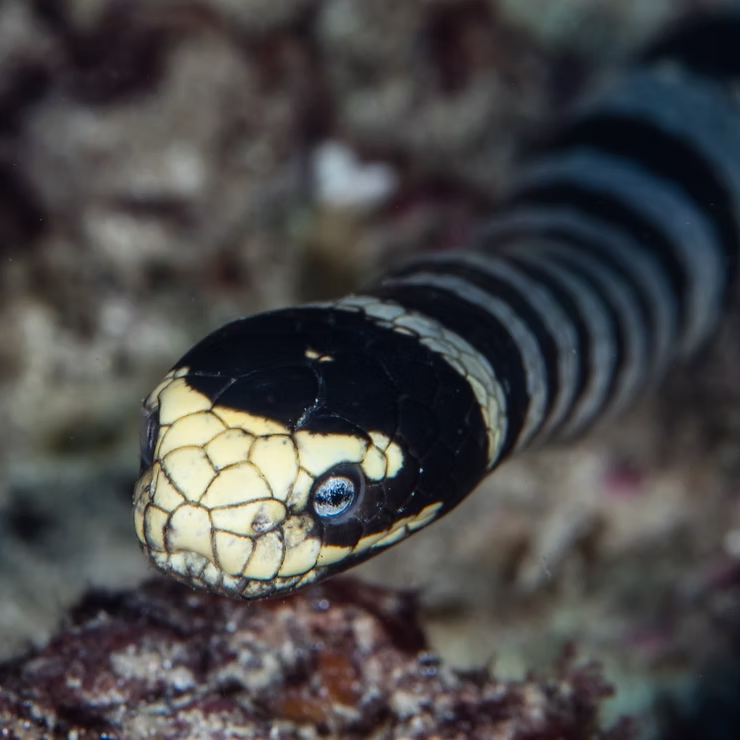Introduction
The Banded Sea Krait is a fascinating sea snake found in the warm waters of the Indo-Pacific. With its distinctive black and yellow bands and venomous bite, it is both beautiful and deadly. This article explores its appearance, habitat, diet, venom, reproduction, behavior, conservation, and encounters.
Appearance
Banded Sea Kraits are aquatic snakes with slender bodies and flattened tails, ideal for swimming. Their smooth, shiny scales and striking black and yellow or white bands serve as a warning to predators.
Habitat
These snakes inhabit coastal waters of Southeast Asia, including coral reefs, seagrass beds, and rocky shores. They are versatile, occasionally venturing into brackish waters and estuaries.
Diet
Banded Sea Kraits are opportunistic feeders, primarily eating eels and small fish. They use venom to immobilize prey, sometimes consuming crustaceans and cephalopods.
- Eels: Moray eels, snake eels
- Small fish: Gobies, blennies
- Crustaceans: Crabs, shrimps
- Cephalopods: Squid, octopus
Venom
Their venom is potent, containing neurotoxins and myotoxins that paralyze prey. Despite their toxicity, Banded Sea Kraits are generally docile and only bite when threatened.
Reproduction
Banded Sea Kraits are oviparous, laying eggs in sandy beaches or rocky crevices. Males compete for females during the breeding season, ensuring only the strongest pass on their genes. Hatchlings instinctively swim toward the ocean after hatching.
- Reproductive strategy: Oviparous
- Parental care: None
- Sexual dimorphism: Present, males smaller with longer tails
Behavior
These snakes are nocturnal hunters, excellent swimmers, and mostly avoid humans. They may display defensive behavior if threatened but rarely bite. Large aggregations occur during breeding season.
Conservation Status
Banded Sea Kraits are vulnerable due to habitat loss, pollution, and bycatch. Marine protected areas and educational programs are essential to safeguard their populations.
Fascinating Facts
Unique Adaptations
- Ability to breathe both air and water
- Salt-excreting glands to survive saline waters
- Retractable fangs for safer hunting
Hunting Techniques
They hunt both on land and in water, using venom to immobilize prey and patiently waiting to strike.
Social Behavior
Banded Sea Kraits are social during breeding, forming large aggregations and communal nesting sites for protection.
Predators
Sharks, large fish, and marine mammals pose threats, and their coloration helps camouflage them from predators.
Life Cycle
They exhibit ovoviviparity, giving birth to fully formed young. Hatchlings are independent and capable of swimming and hunting immediately.
Encounters with Banded Sea Kraits
Diving Experiences
These snakes are a highlight for divers, with safety tips including observing from a distance and avoiding sudden movements.
Close Encounters and Rare Sightings
Encounters are thrilling yet require caution. Rare sightings are often described as awe-inspiring due to their camouflage and elegance.
Local Legends
In coastal communities, Banded Sea Kraits are seen as sacred and symbolic of luck, protection, and balance.
Conclusion
The Banded Sea Krait is a beautiful, venomous snake with remarkable adaptations. Conservation is vital to ensure its survival for future generations.

